For this year’s London Design Week, we showcased one of our most iconic bas-relief artworks from a residential project commissioned by the esteemed design studio Andrew Winch. Join us as we delve into the creative process behind this unique piece in an insightful conversation with its designer, Eoin Ryan of DKT Artworks.
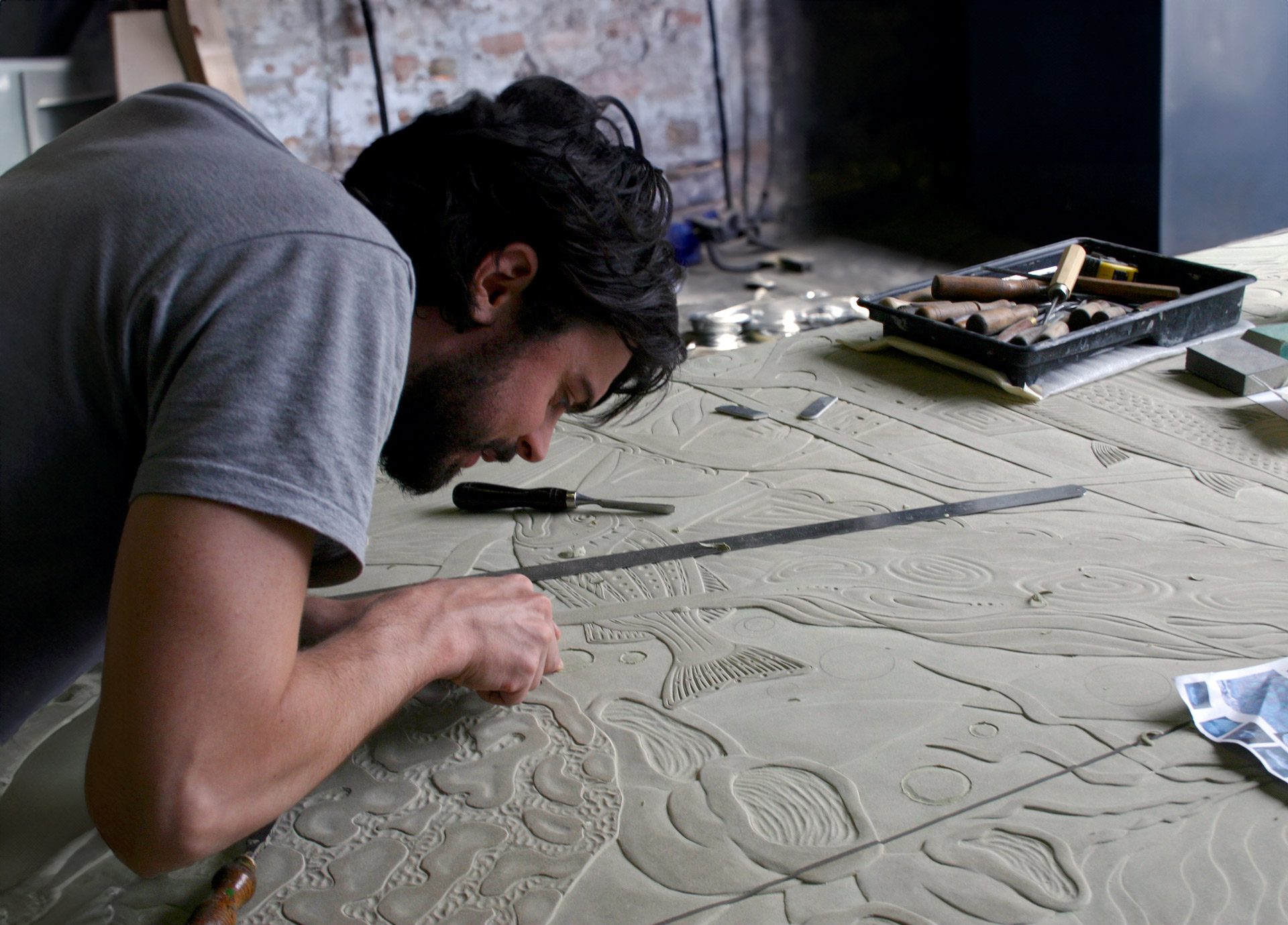
How did you get started in art and design?
“I initially studied animation for a few years before getting into Mural painting and specialist finishes. Eventually I decided to go back to University and I graduated from Camberwell College of Arts in 2008 with a BA in Illustration. Since then I’ve done illustration work for a wide range of clients including Warp Records, Faber & Faber, Universal Music, New Statesman, New York Times, New Scientist and Penguin Books. In addition to this, I’ve worked at DKT Artworks as an artist and designer for the last 15 years”.

What is your role at DKT Artworks?
“My work involves designing artworks and bringing them to life through various mediums such as carving, sculpting, and painting. I oversee projects from conception to completion, engaging in all stages of the process. Sometimes I solely handle the design aspect, while other times I execute designs created by others. Additionally, I’m always exploring new techniques, including digital 3D work, to expand my skill set and approach projects from different angles. My role is multifaceted – I’m not just a designer, but I’m also involved in various aspects of the creative process”.
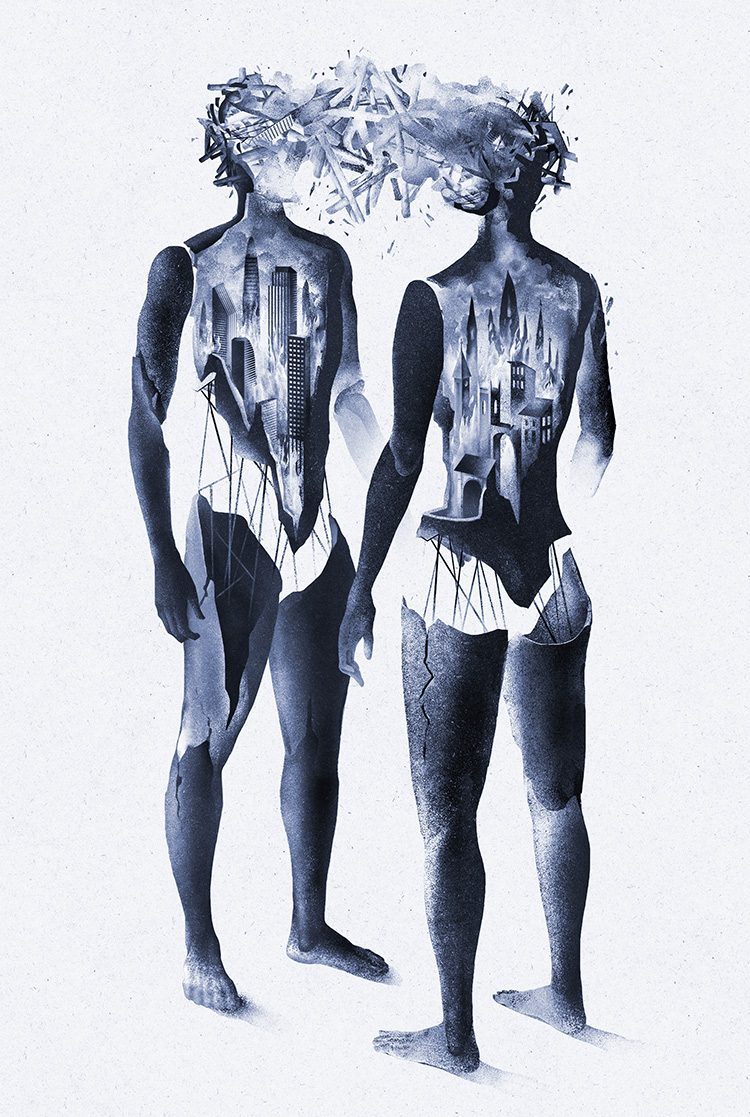
Could you tell us a bit about your design practice?
“My freelance work is mainly centred on producing illustrations for editorial content, for online and print publishing, including book covers and the occasional album artwork. I tend to get hired specifically for my style, in contrast to DKT Artworks – where we intentionally don’t have a house style”.
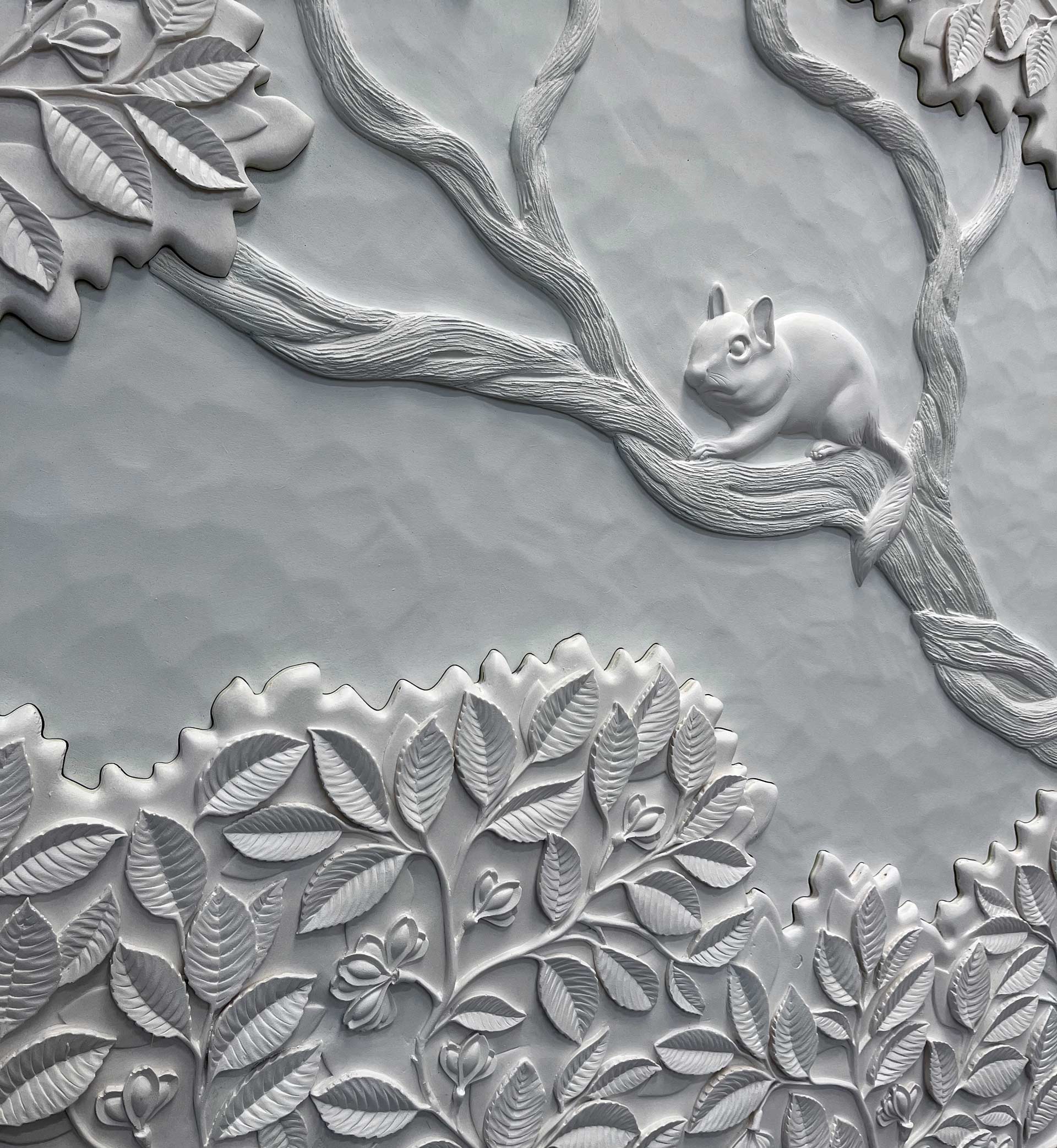
What inspires your illustration style?
“I draw inspiration from a diverse range of sources, including books, movies, and anything I find visually interesting. I like things that are handmade – crafted things. I like the quality and limited colour palette of print, especially woodblock, lithography and traditional Japanese methods of printing – which is ironic because I use a lot of digital tools now. My style is a little bit dark as well. I tend to get hired for a lot of dystopian articles about AI and things like that”.
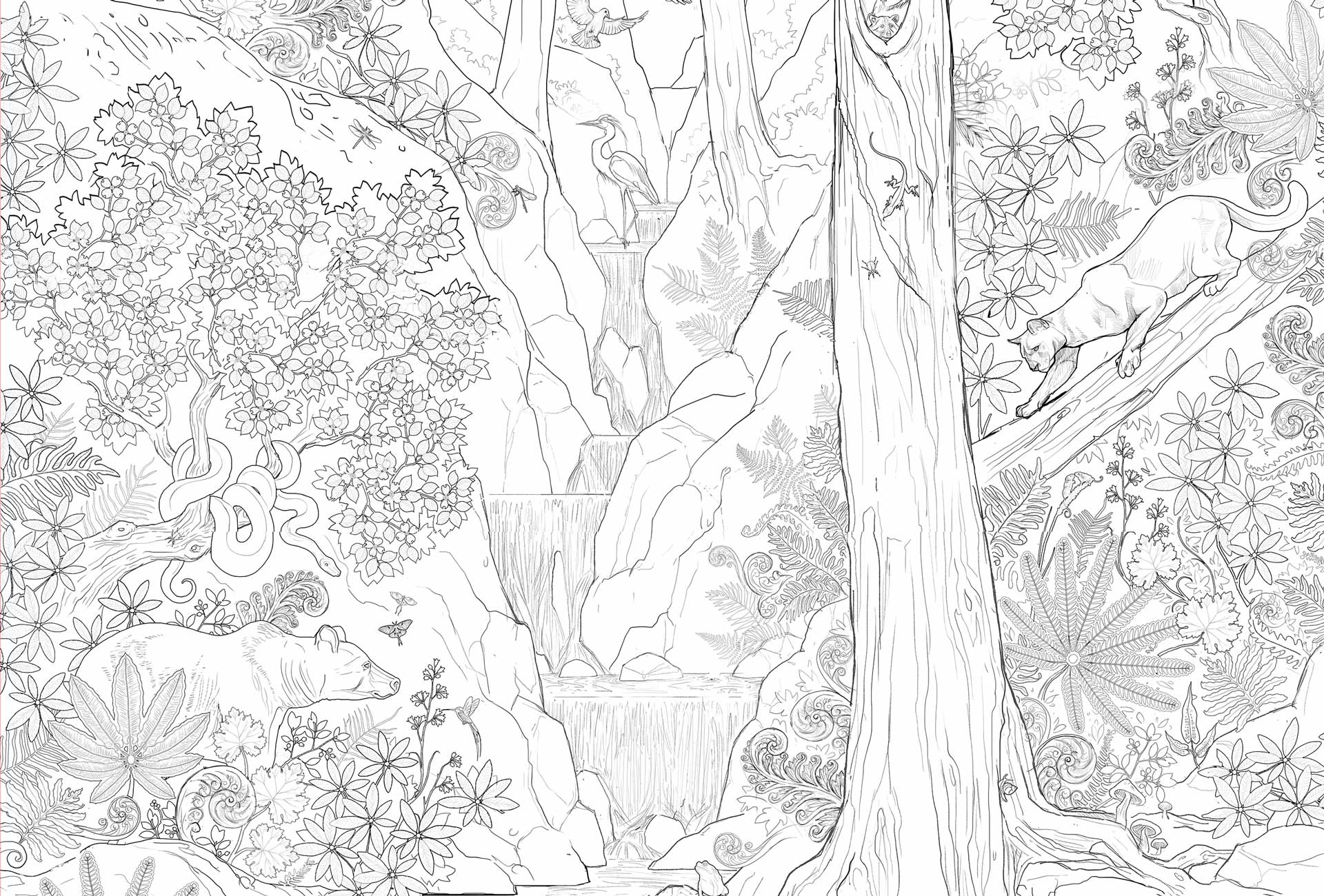
How do you approach designing 3D and bas-relief artwork?
“When I’m drawing for 3D projects, my focus is on forms and composition, while for bas-reliefs, I consider how they’ll be carved and anticipate potential issues beforehand. The end result is already feeding back to the beginning. It’s quite a pragmatic approach that influences the design process, with considerations such as weight, size constraints, shipping requirements, material choice, and casting feasibility all factored in from the outset to avoid future complications”.
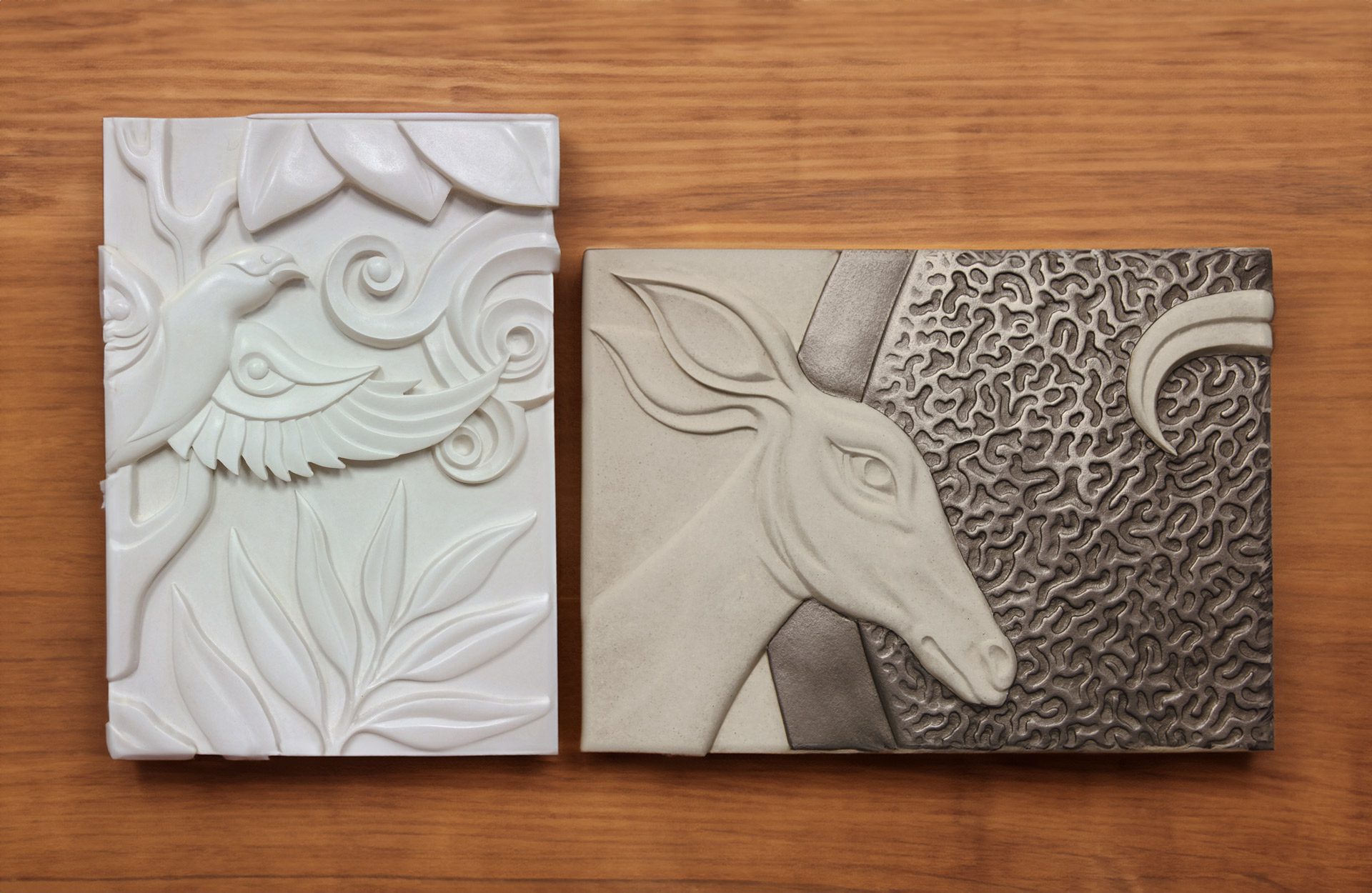
How does this differ from your 2D print work?
“In my print work, I often begin by capturing a certain mood or colour palette to evoke a particular feeling. It includes figurative objects as well but that’s where you start, with blocks of colour, objects, and establishing the desired atmosphere or emotion within the piece”.
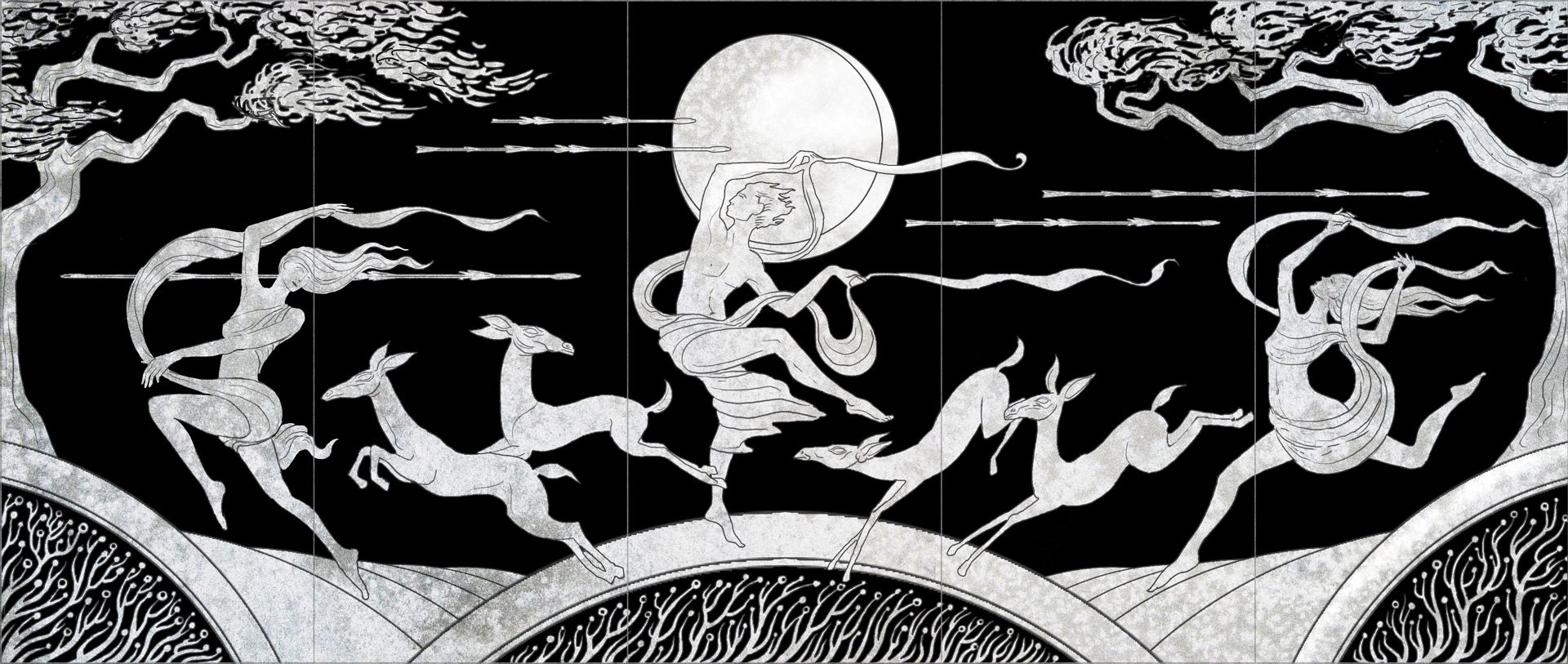
What was the original brief for the Andrew Winch bas-relief project?
“That project was unique in that we didn’t work to a set brief, we were brought on quite early in the process and initially, there was going to be a collection of artworks inspired by the elements; fire, earth, water and air. As the project progressed this changed into more of a nature theme and for the space to have a large standalone artwork instead of smaller individual pieces. I was quite happy about the limited brief as it gave me a lot of creative freedom. The only prescription was that the finished piece would have a white stone finish. I did some initial sketches that the team at Andrew Winch were happy with, so at that point, I refined that further”.
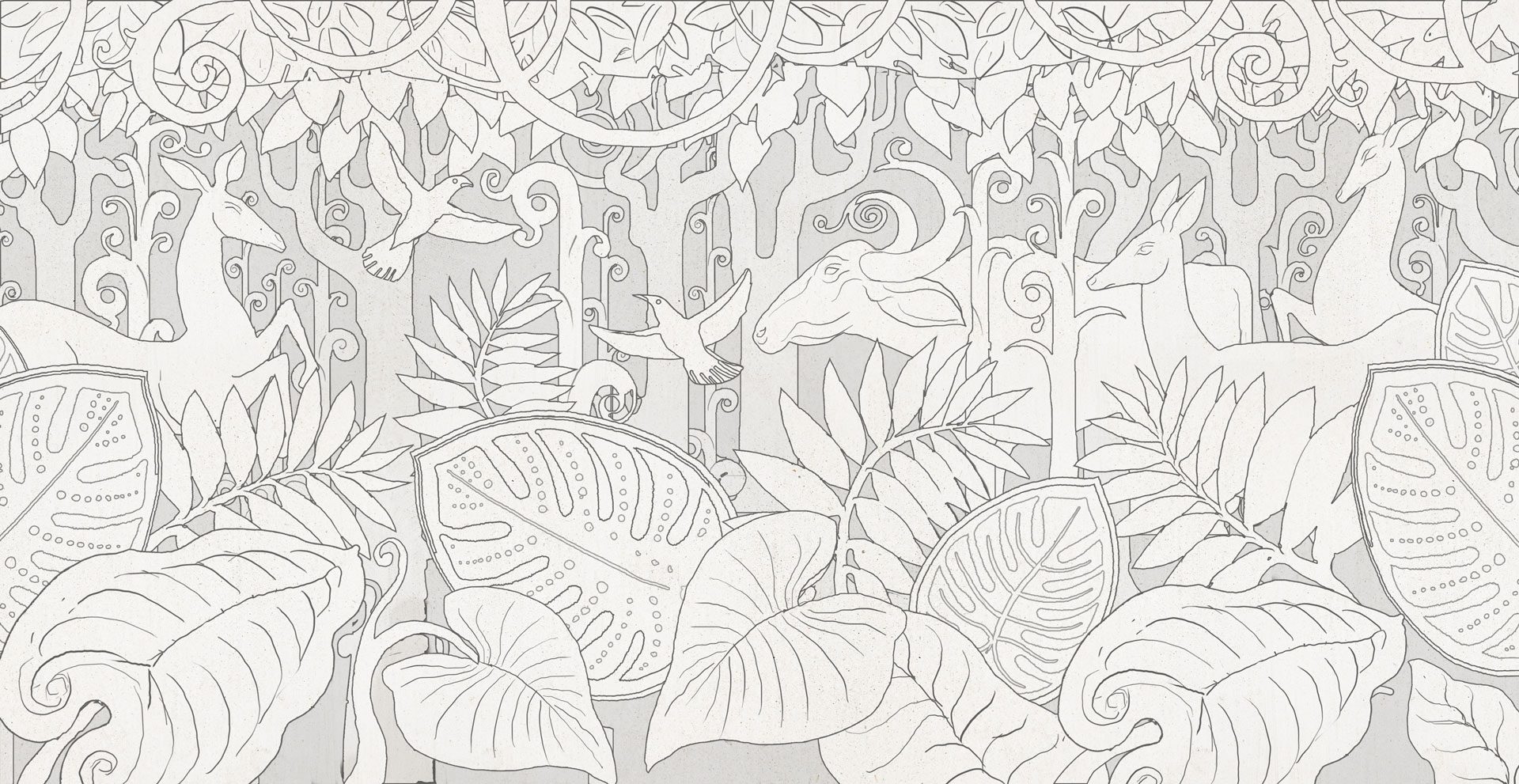
Where did the style of this piece originate from?
“The stylistic themes developed as the project progressed. I was not aiming for a specific style, the final piece is inspired by Art Deco but it also has very ornate elements. The design and style of carving came naturally without being prescribed, which is why I think it works. It got a lot more intricate as it went along”.
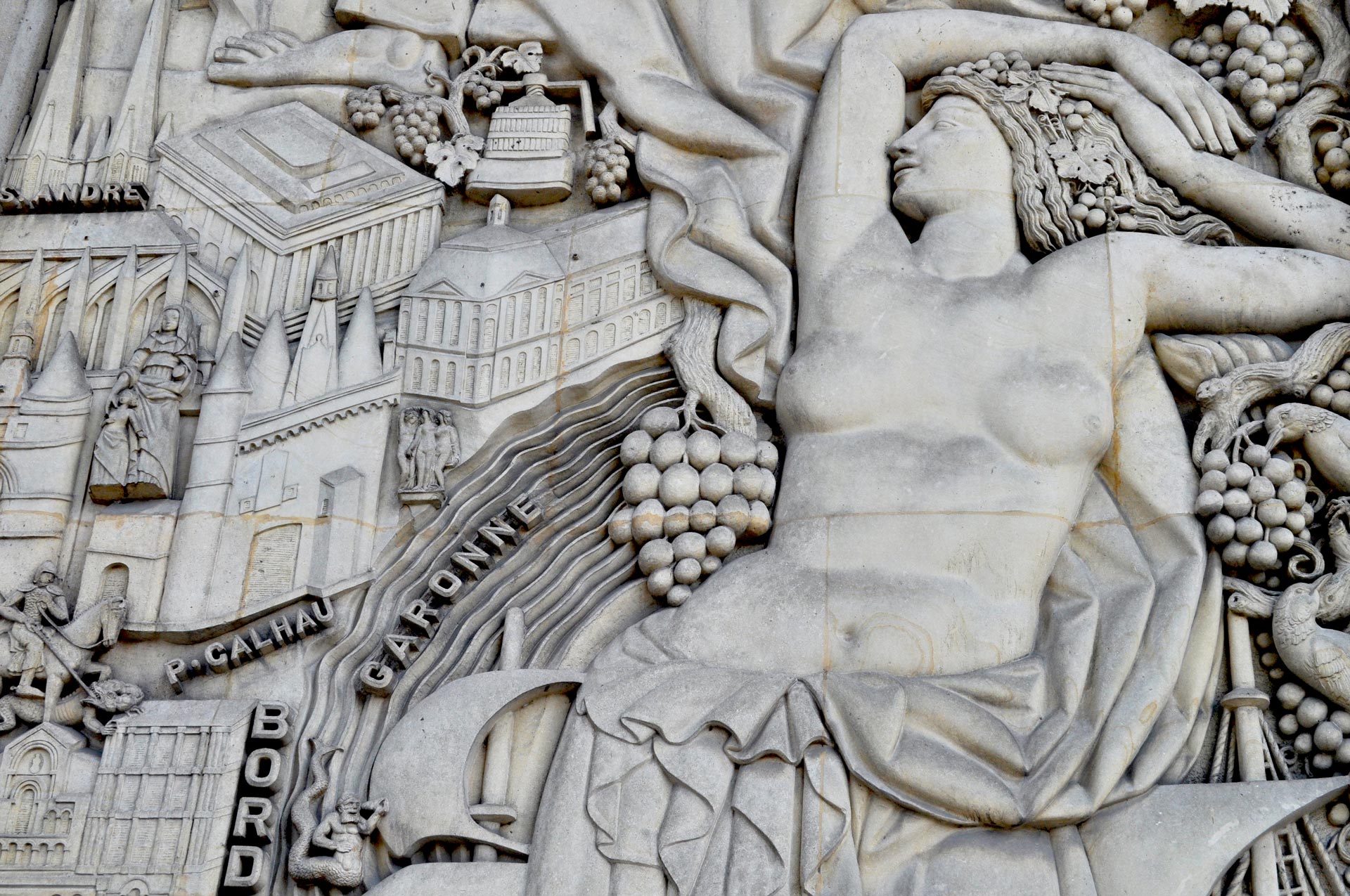
Where did you find inspiration for this project?
“I had seen the work of French sculptor, Alfred Janniot, not long before the project started. He did the facade for Palais de la Porte Dorée, at the Paris Colonial Exposition of 1931. It’s entirely carved in stone, stretching a couple of storeys high, spread across the whole front of the building. It depicts a highly idealised version of colonialism, yet remains an impressive example of architectural bas-relief.
I had also been to India, and had recently done a cover for a retelling of the Sanskrit epic Ramayana at that time, so I had some of that imagery knocking around in my head. Influences such as these are where the idea of Deers and Water Buffalo originated, and once I experimented with these concepts visually, the process became quite fluid”.
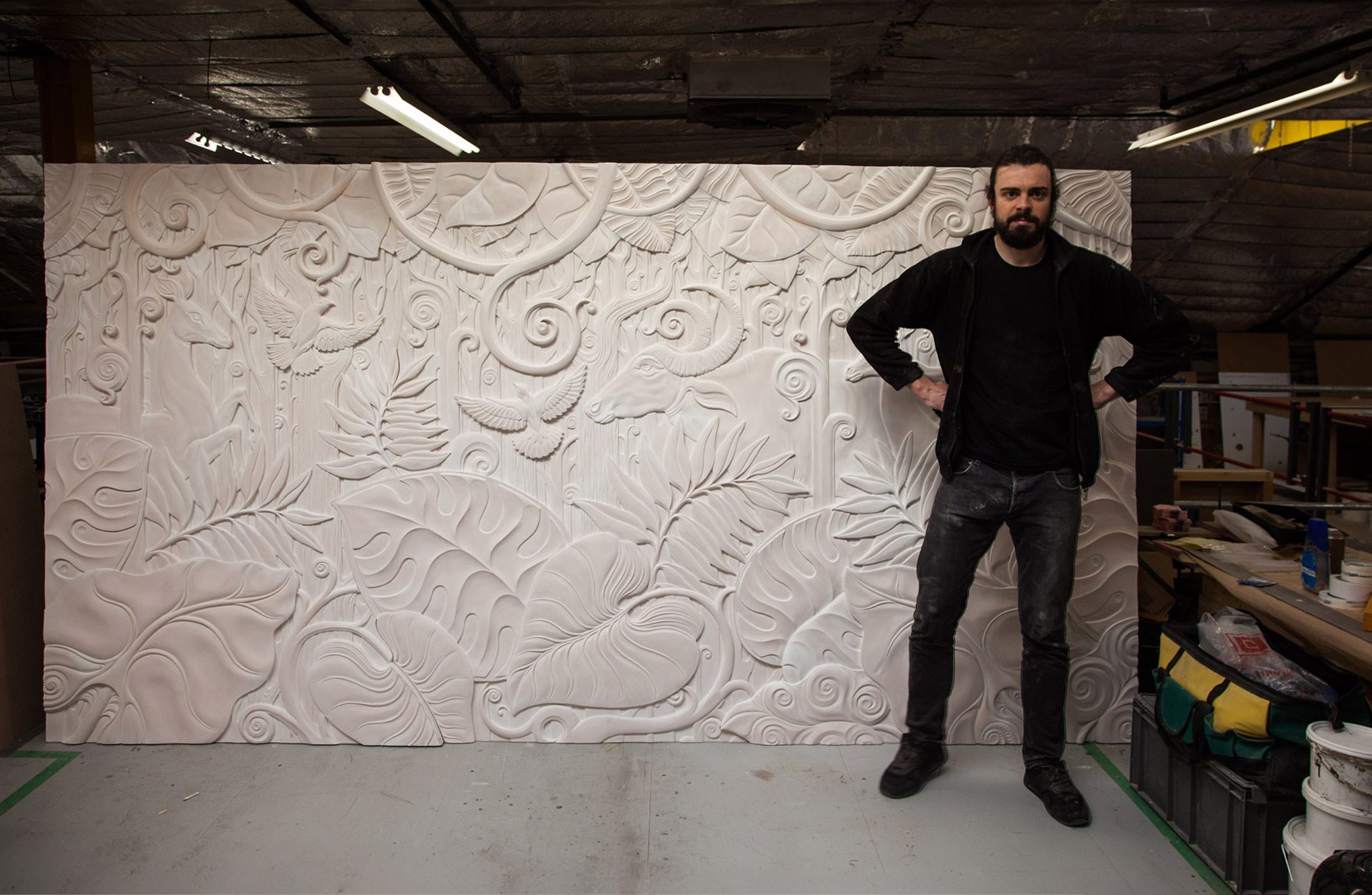
How do you approach scale for such a large bas-relief artwork?
“I will always print segments of the design out to scale so that you get a reference point. We also produce samples for the client that are to scale so that helps with visualising and refining the design. I think the more you work on these large-scale projects, you gradually develop a more intuitive understanding of how the artwork will fit into a room or a space”.
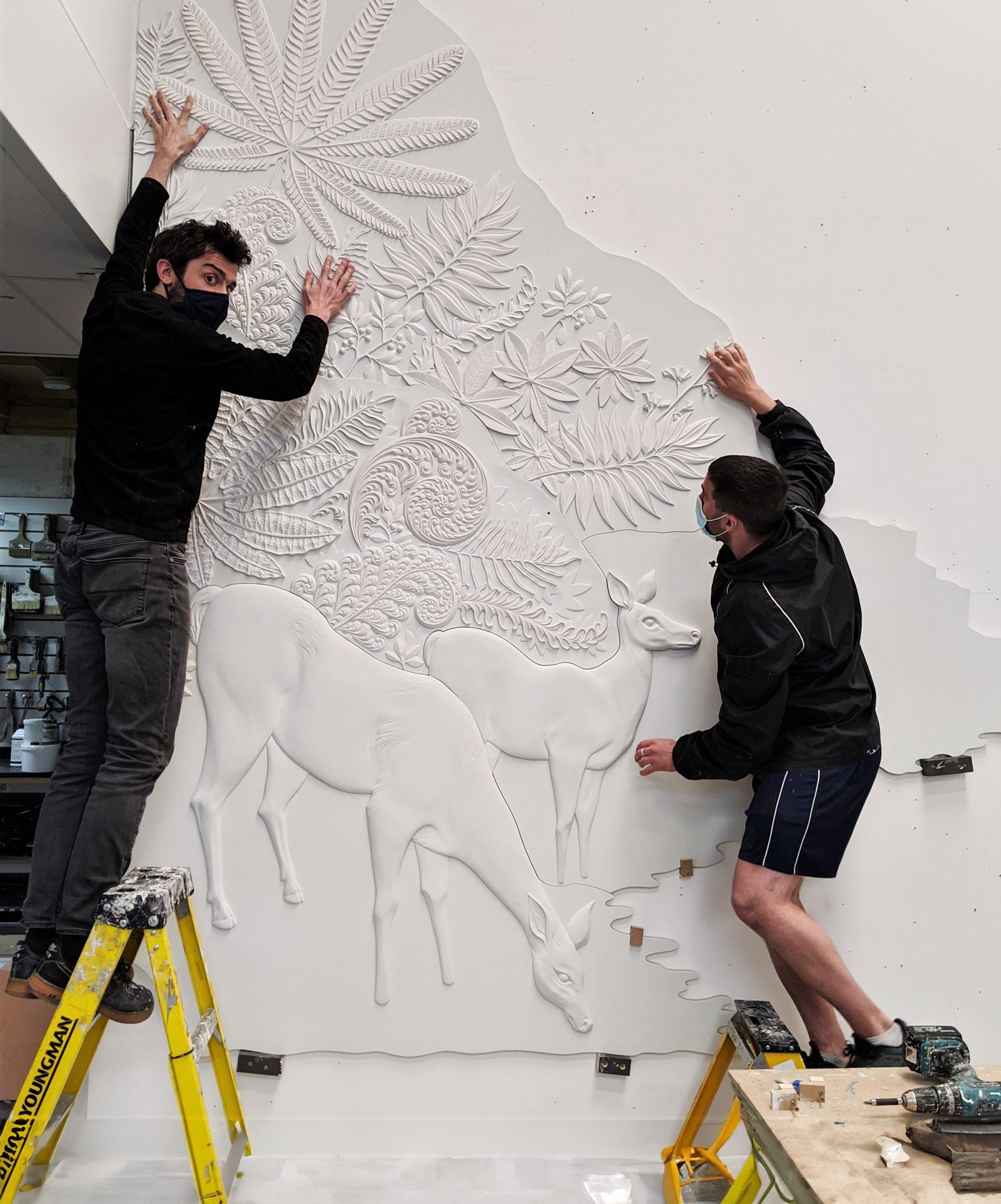
What carving technique did you use for this project?
“The carving for the piece is unusually deep, at the time I hadn’t done a lot of big carvings and I felt it needed depth to give it more impact. As I said, I was also influenced by Janniot’s intricately carved monumental sculptures. I’ve learnt now that you can achieve a similar effect with shallower carving by working with subtle inclines and delineations, giving the bas-relief an illusion of depth. This technique is trickier to achieve but more suited to projects where you have weight and size restrictions. I’m still glad we went with a deep carving for this piece, it gives it a uniquely stark and pronounced look that we wouldn’t have achieved otherwise. It helps that the design has so many layers to it as well”.
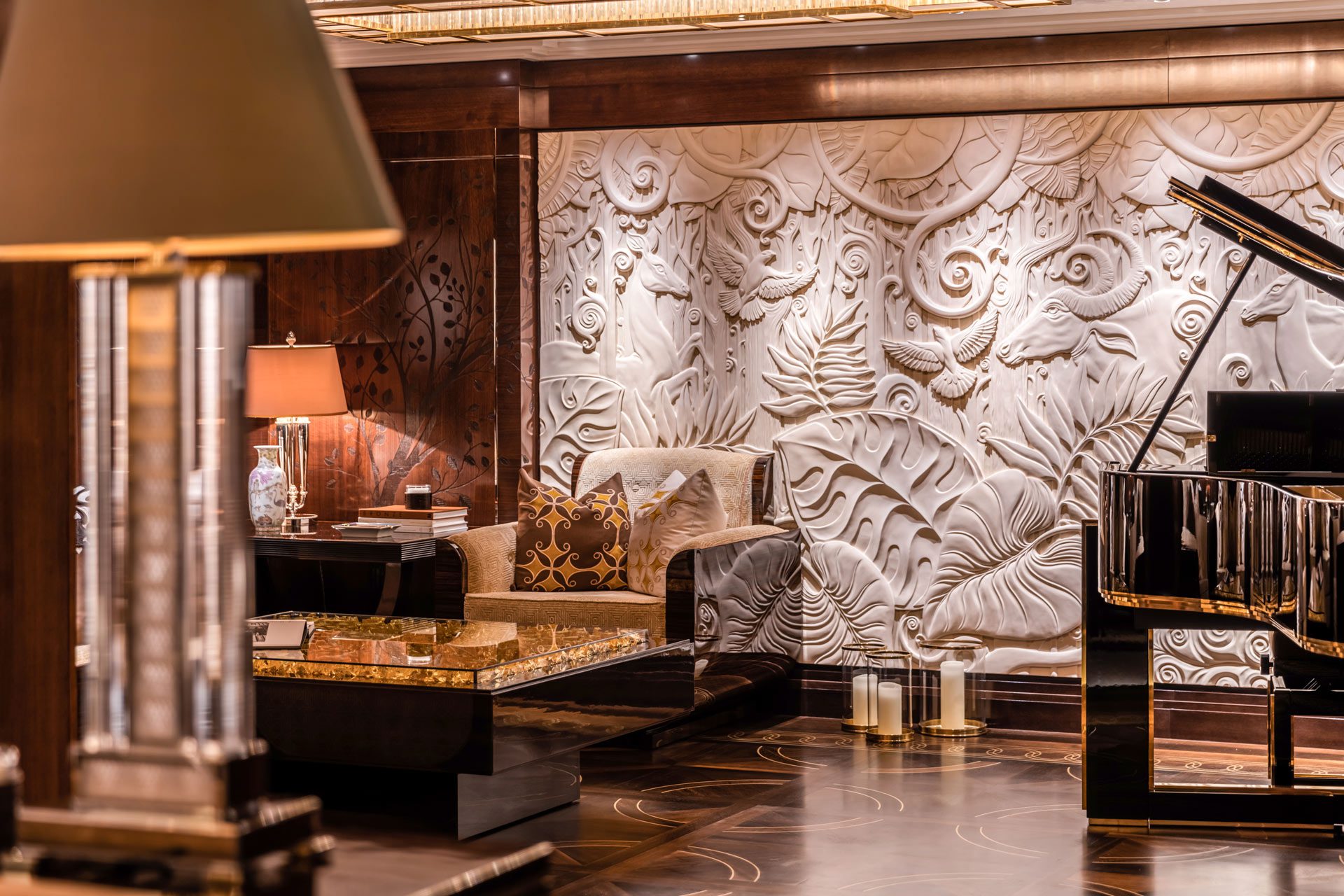
What’s the importance of bespoke art in a space?
“I think it’s about considering the environment and seamlessly integrating the art with its surroundings in a thoughtful way. It can amplify the desired feel for the space and has the potential to elevate it in a way that may not be as easily achieved with non-bespoke pieces”.
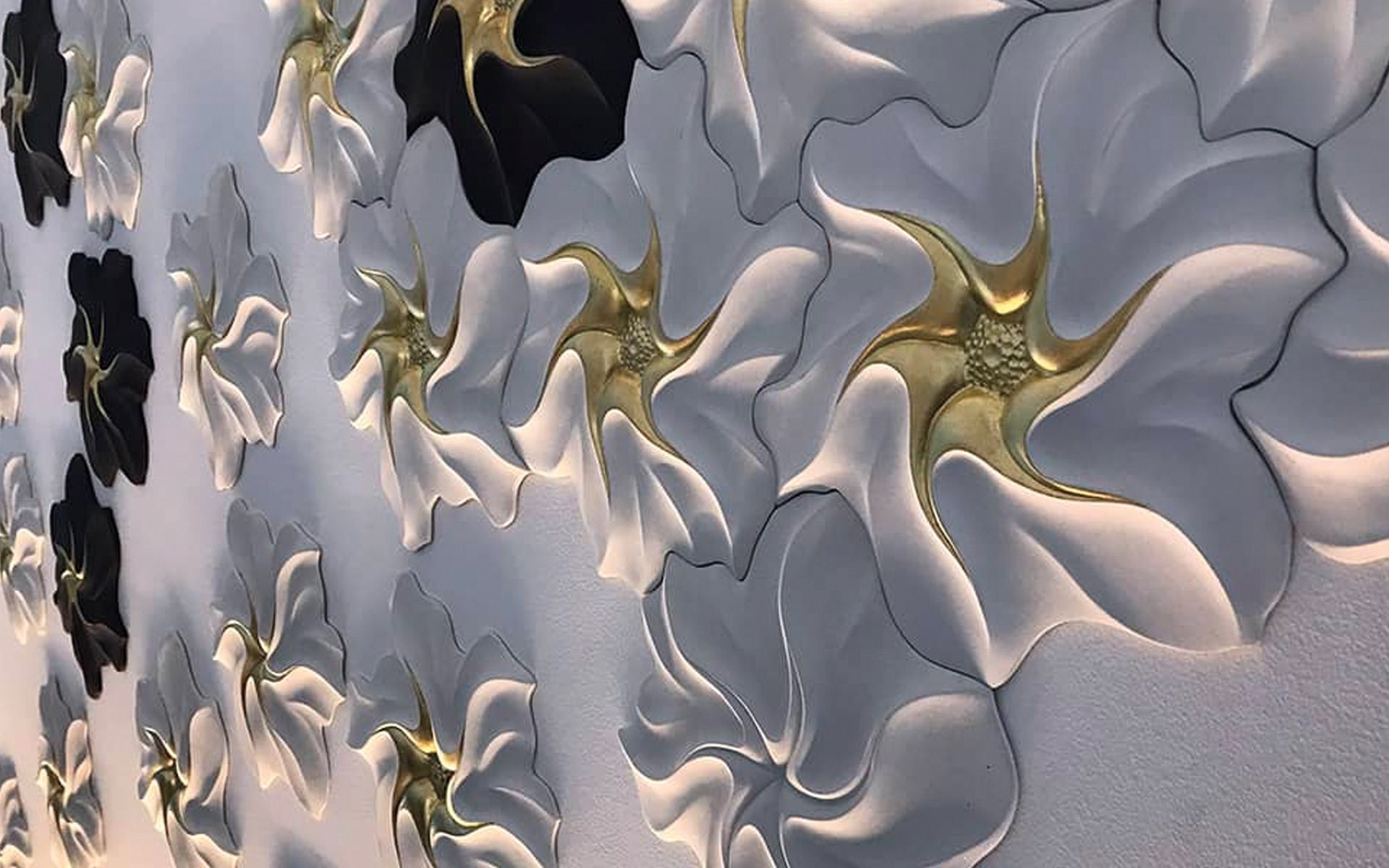
What are some of your favourite projects at DKT Artworks?
“I liked designing ‘Flora and Fauna’, a residential bas-relief project that is still in development. It will be the largest bas-relief we’ve ever created, and the biggest technical challenge I’ve ever faced with a carving. I also really enjoyed developing ‘Asagao’, a set of modular bas-relief tiles cast in a stone finish with gilded details”.